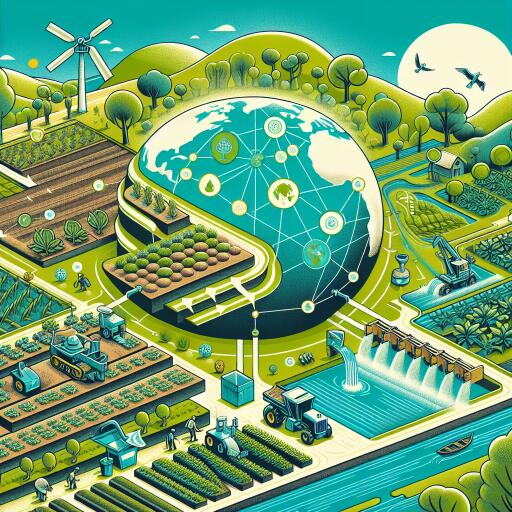
The Role of Innovative Management in Achieving Sustainable Land and Water Use
In our ongoing battle against challenges such as land degradation, water scarcity, climate change, and declining biodiversity, innovative land and water management strategies are becoming increasingly crucial. These strategies are not just confined to select corners of the globe but are being implemented worldwide to foster environmental, economic, and social co-benefits.
The concepts of Land Degradation Neutrality (LDN) and Sustainable Land Management (SLM) are at the forefront of global efforts to address these issues. LDN aims to maintain or improve the land’s capacity to provide ecosystem services relative to a baseline, whereas SLM seeks to use land resources in a way that meets human needs without compromising future generations’ ability to meet theirs. Together, they form a framework for evaluating and enhancing the effectiveness of land and water management approaches.
Alignment with LDN and SLM principles is a key factor in ensuring that such approaches can be integrated into broader strategies for improving land productivity and sustainability. This not only involves rehabilitating and conserving land and water resources but also enhancing the livelihoods of communities reliant on these resources.
To systematically assess how various management approaches align with SLM and LDN, an extensive analysis was conducted. This analysis explored the coherence between these approaches and the criteria defined by SLM and LDN, focusing on ecosystem health, food security, and human well-being. Furthermore, the assessment delved into additional socioeconomic factors that play a crucial role across these pillars.
Among the approaches reviewed were agroecology, integrated and conservation agriculture, regenerative agriculture, climatesmart agriculture, rewilding, and forest landscape restoration. Each of these approaches was evaluated based on their contributions towards achieving SLM and LDN, focusing on their strengths and identifying areas where gaps in alignment exist.
The findings revealed a mixed picture. While all approaches demonstrated alignment with several LDN and SLM criteria, none fully met all the criteria. Agroecology emerged as a comprehensive approach with significant alignment due to its holistic objectives. Similarly, regenerative and integrated agriculture showed strong alignment, particularly in enhancing agroecosystem conditions and sustainable resource use. Forest landscape restoration also aligned well, albeit with certain limitations in addressing human well-being criteria.
Conversely, conservation agriculture, despite its benefits for agroecosystems and soil conservation, had alignment gaps due to its occasional reliance on harmful chemicals and overlook of local knowledge. Rewilding, with its focus on natural processes, and climatesmart agriculture, which emphasizes productivity and climate resilience, showed the least alignment, notably in areas affecting human well-being and broader socioeconomic goals.
The primary gap in alignment across all strategies revolved around the human well-being pillar of SLM and LDN, indicating a common shortfall in addressing the needs and rights of local communities, including considerations for land tenure and gender inclusivity. This underscores the importance of incorporating more socially-oriented criteria in project planning and implementation stages.
To bridge these gaps, the report suggests leveraging supplementary activities tailored to target these deficiencies, employing internationally recognized guidelines and principles, and ensuring inclusive and context-specific project designs. This approach promises not only to strengthen the alignment with LDN and SLM but also to enhance the overall effectiveness of land and water management efforts.
In conclusion, while each land and water management approach has its strengths, none is without areas that require attention and improvement. Recognizing these gaps and working towards addressing them is key to fully exploiting their potential in contributing to global sustainability goals. As we move forward, it becomes clear that adopting a holistic and integrated perspective, one that balances environmental integrity with human well-being, will be crucial in our quest towards sustainable land and water management.





Leave a Reply